This past March there was a devastating fire in Big Bend National Park, which burned mostly the upper elevations of the Chisos Mountains, an island of mountains within the park. The trails were closed for many months, and when some of them finally opened up in August, I made a backpacking trip up to see the results of the fire. I also made a second backpack trip to the eastern side of the high Chisos a couple of weeks ago. The fire had burned much hotter, and over a larger area than I expected. Trees were not burned just along the ground where the fuel was located, but all the way to the tops of the trees. The following is a photo essay of the results of the fire:
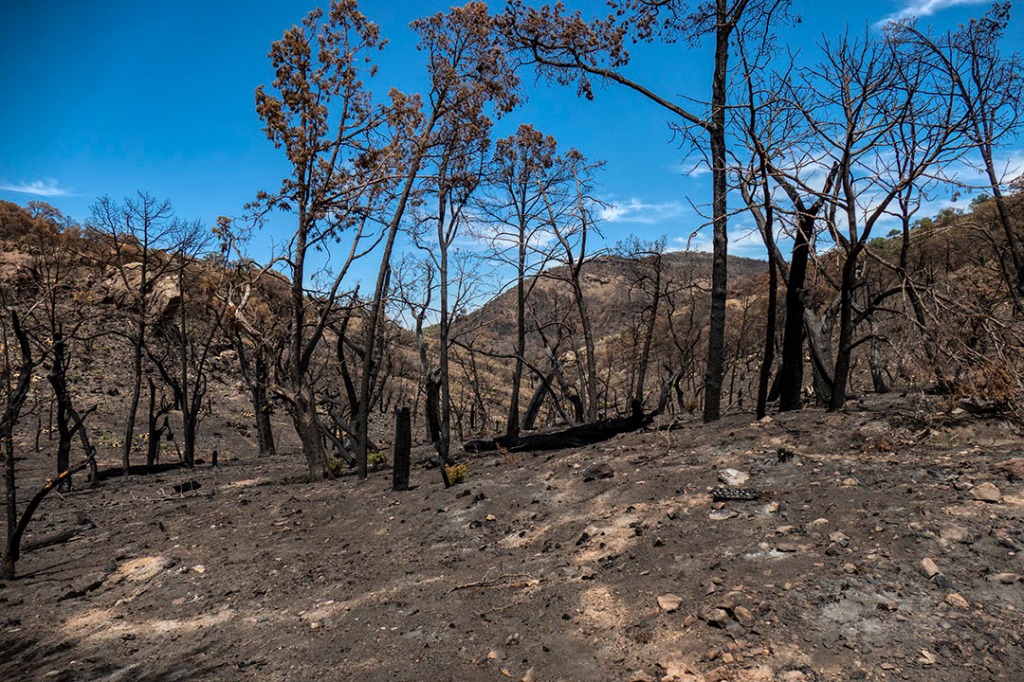
First view of the fire damage as I crested the ridge above the Blue Creek drainage on the western side of the mountains.
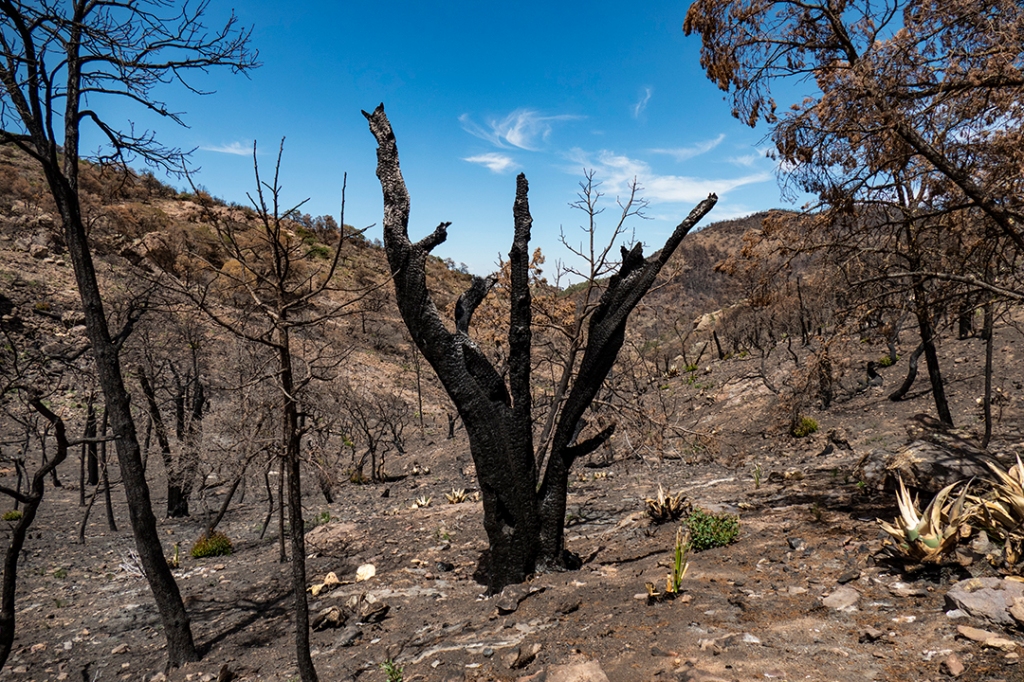
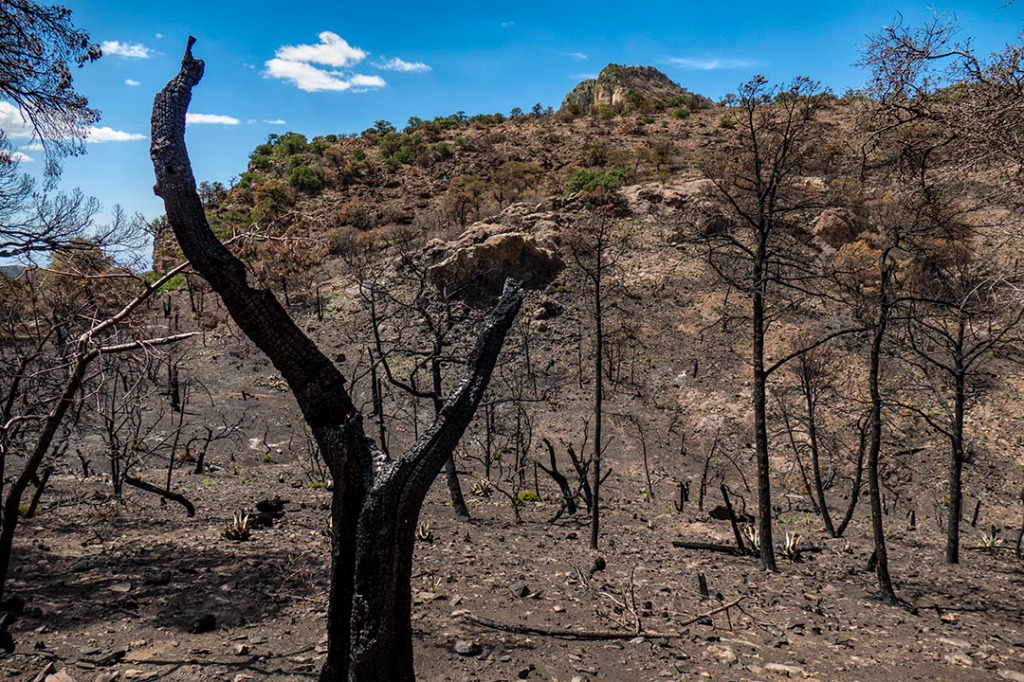
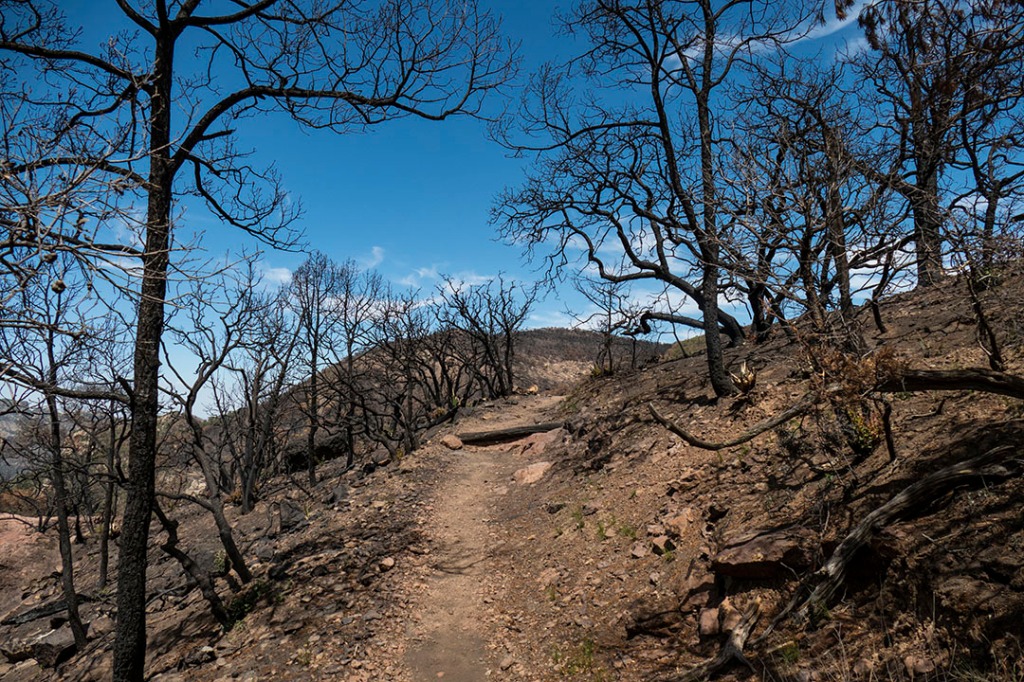
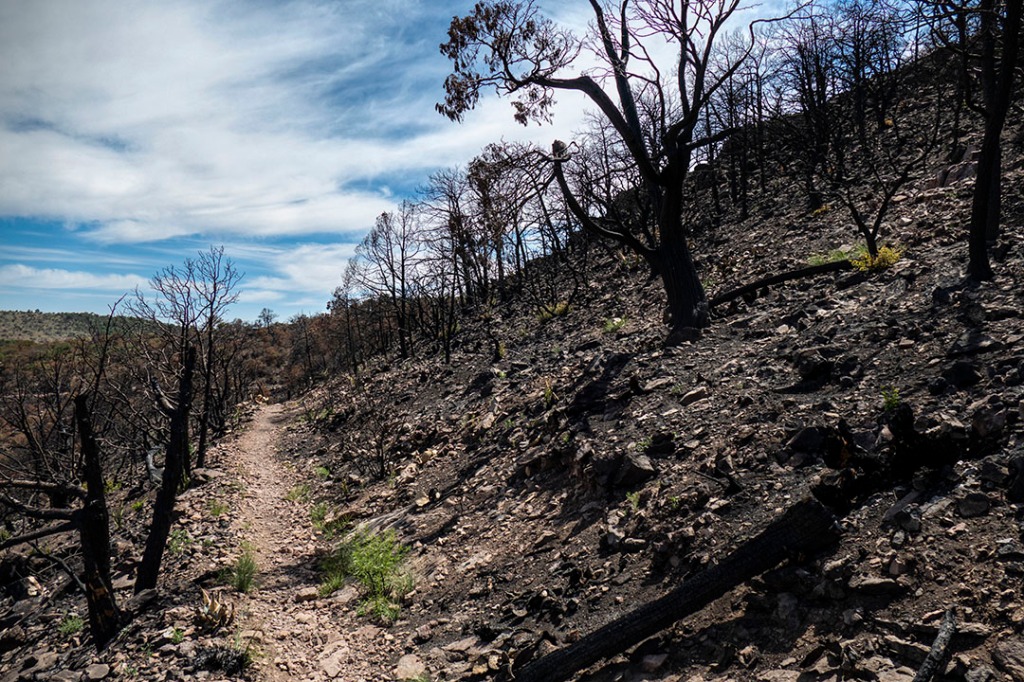
A few grasses beginning to gain a foothold in the burned ground. Normally the grass here is a foot high or more, making it difficult to see any patches of barren ground.
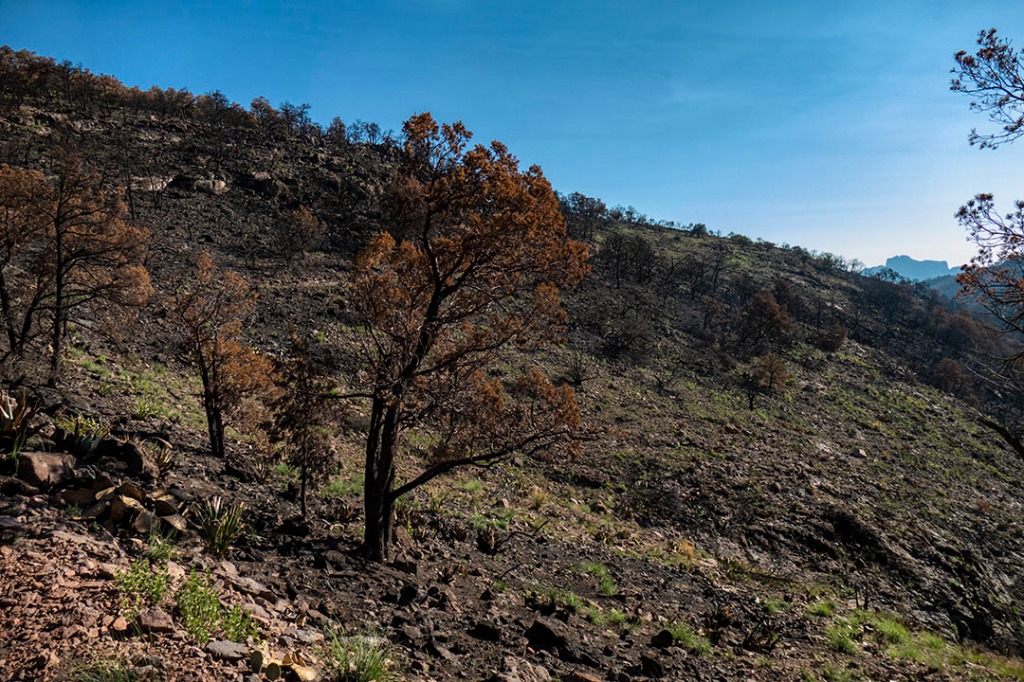
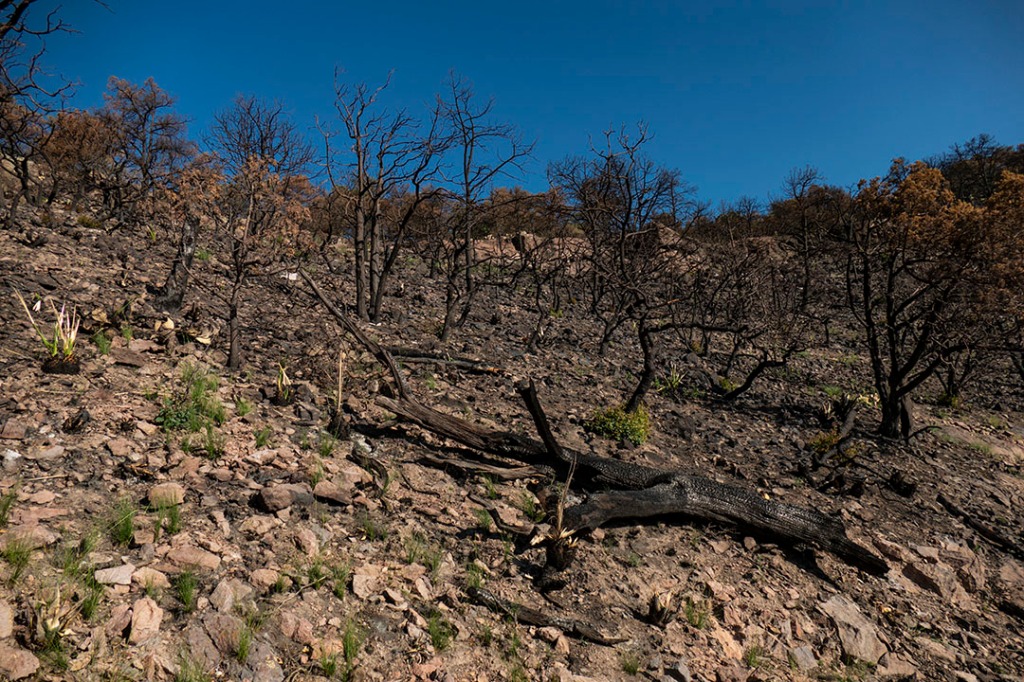
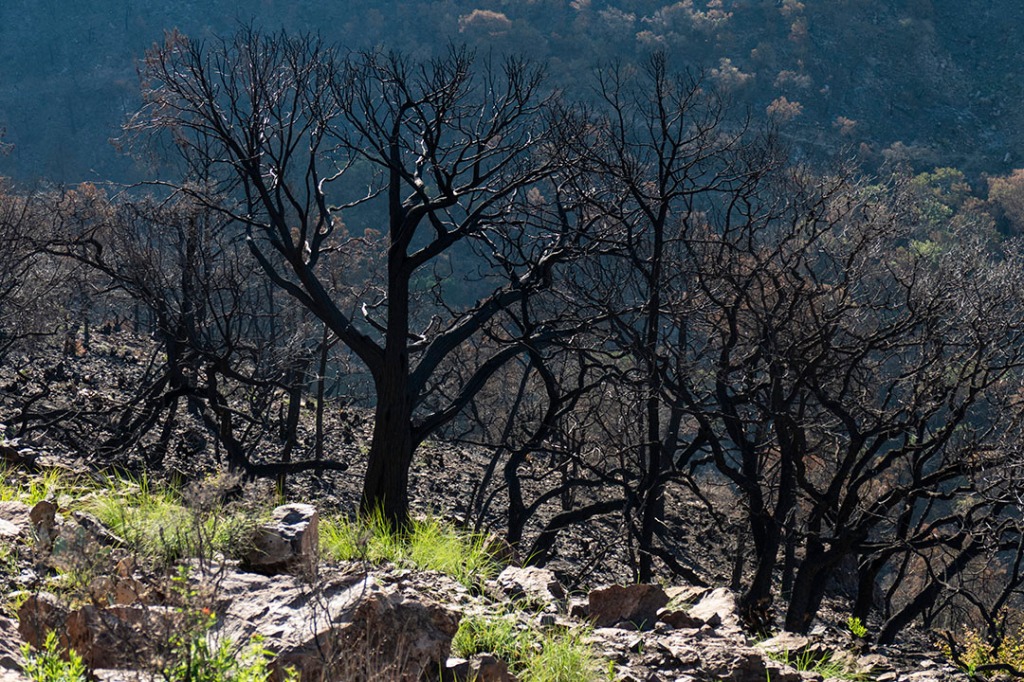
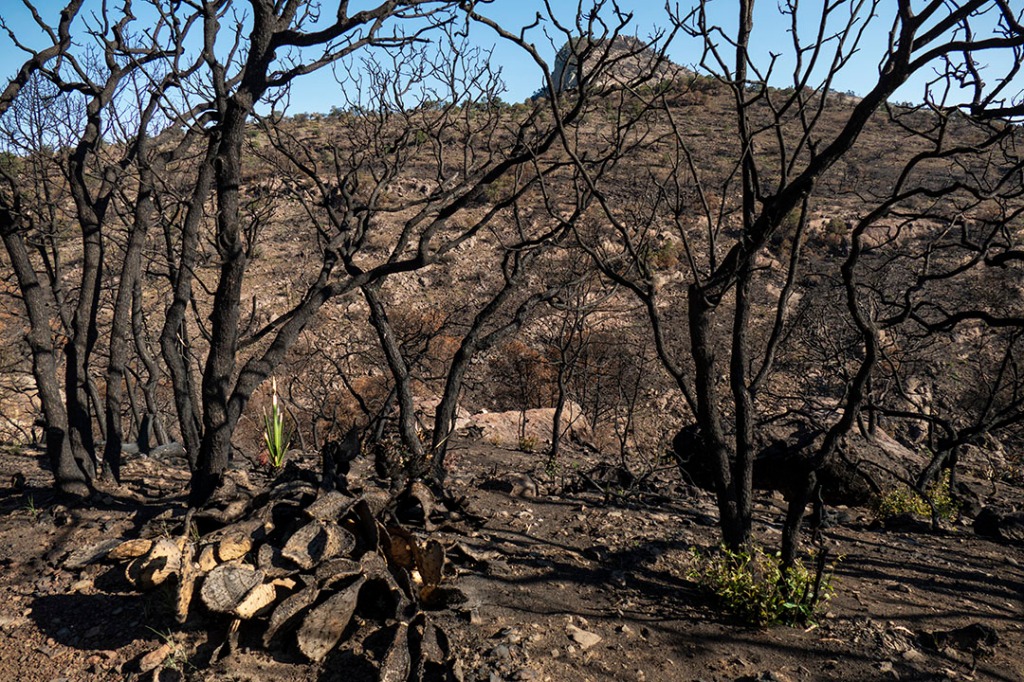
On my second visit late in September, I hiked in through Boot Canyon, one of the most pristine areas of the high Chisos Mtns. It contains most of the water and wildlife to be found, including a stand of beautiful maple trees that produce wonderful fall color in early November.
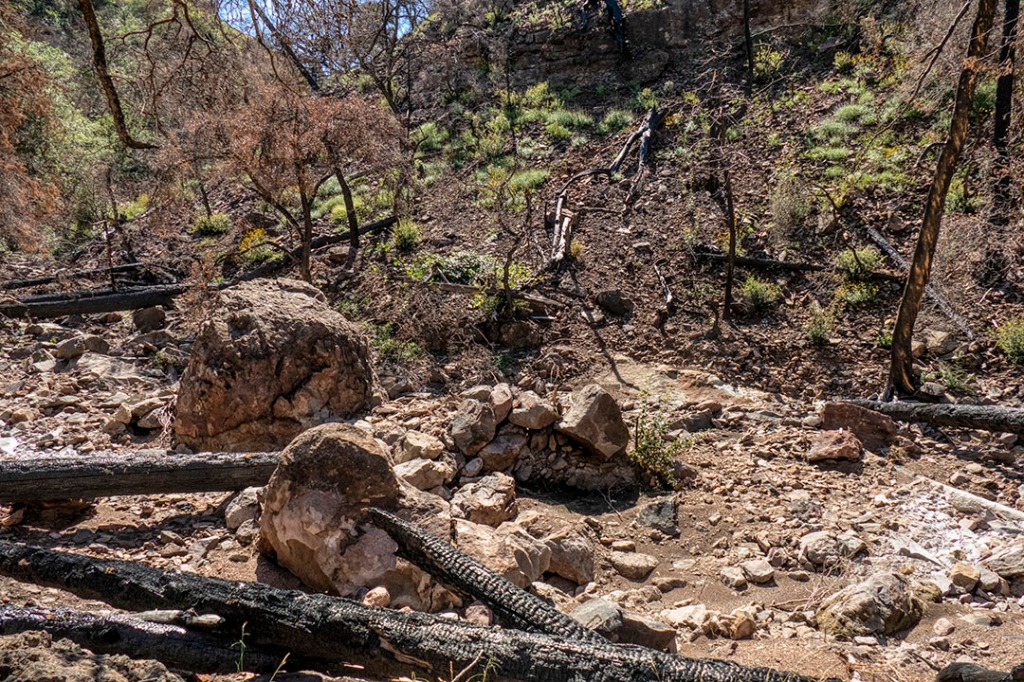
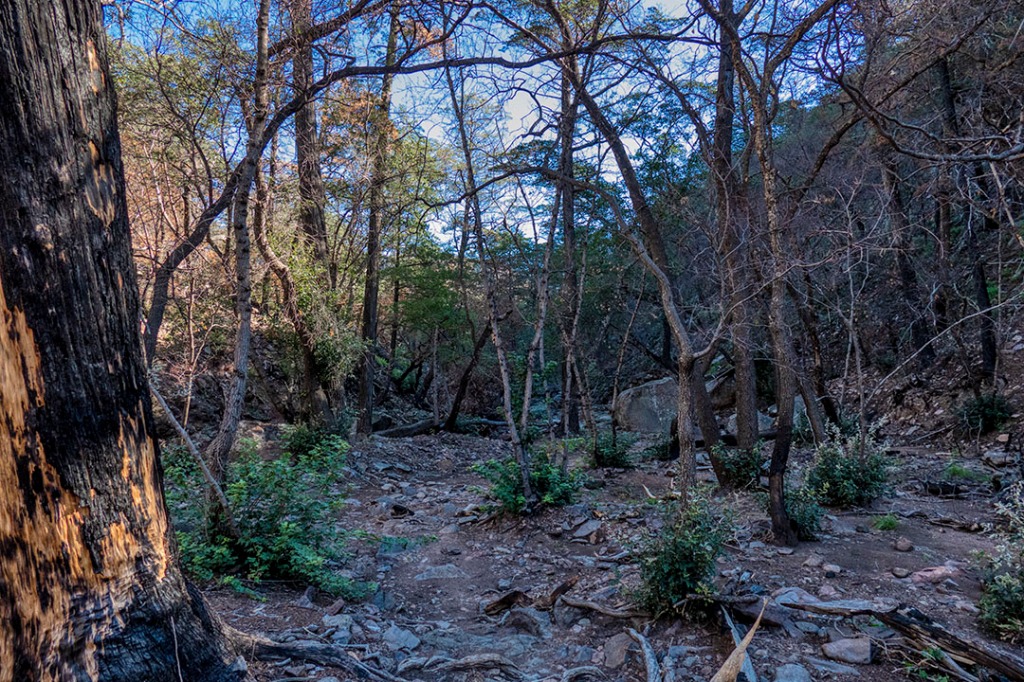
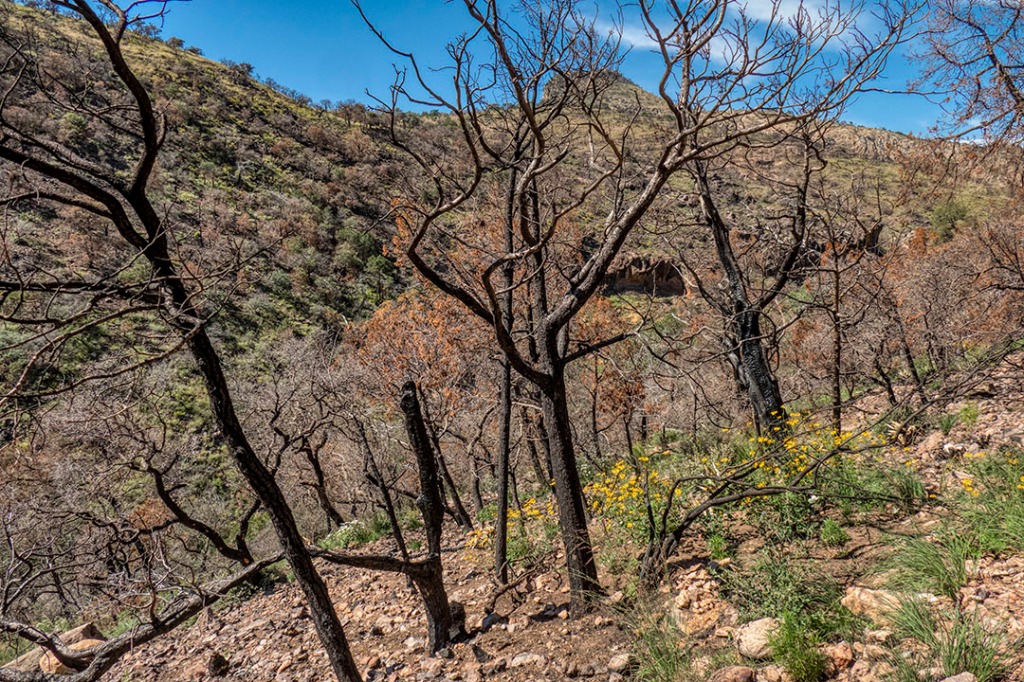
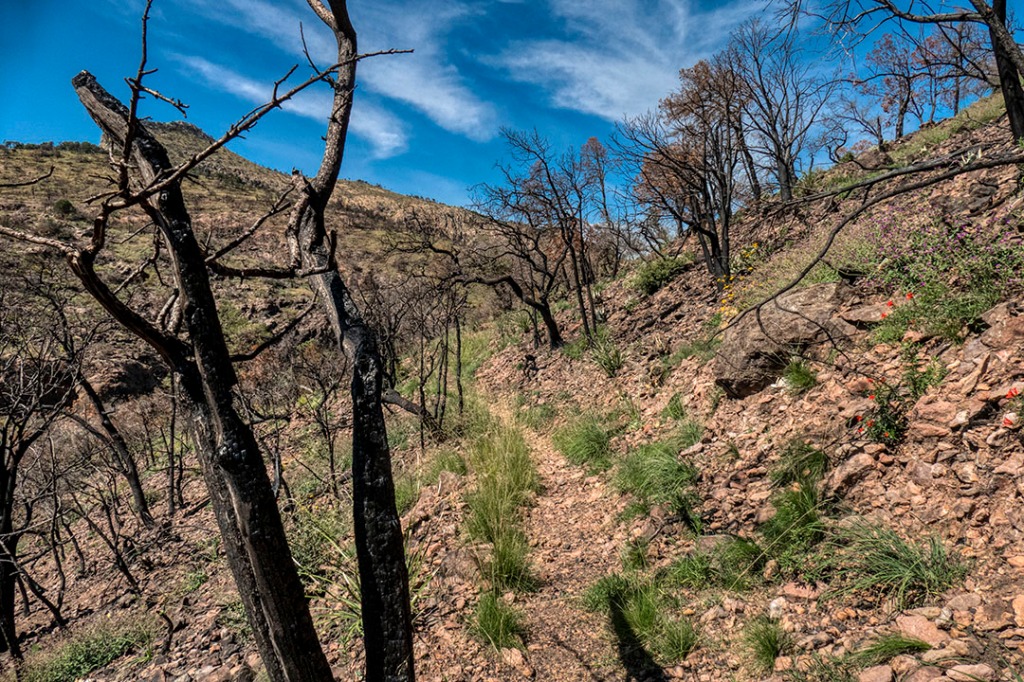
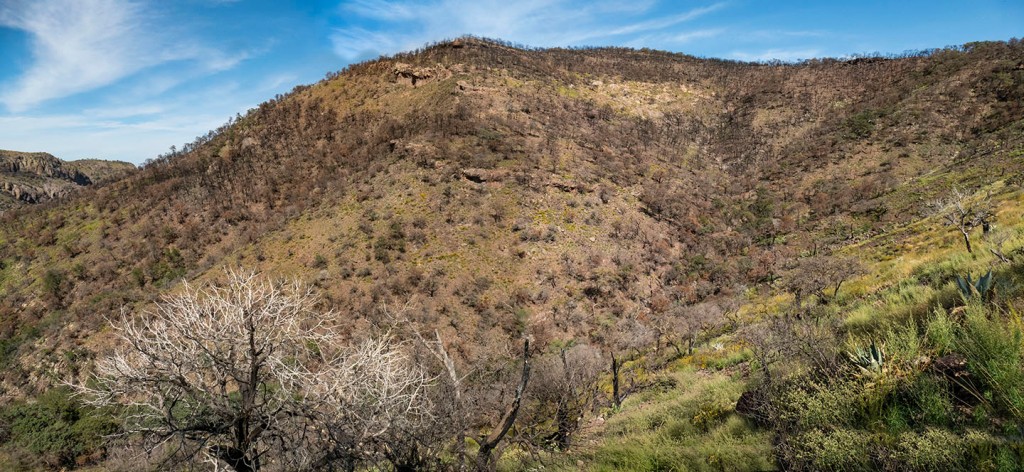
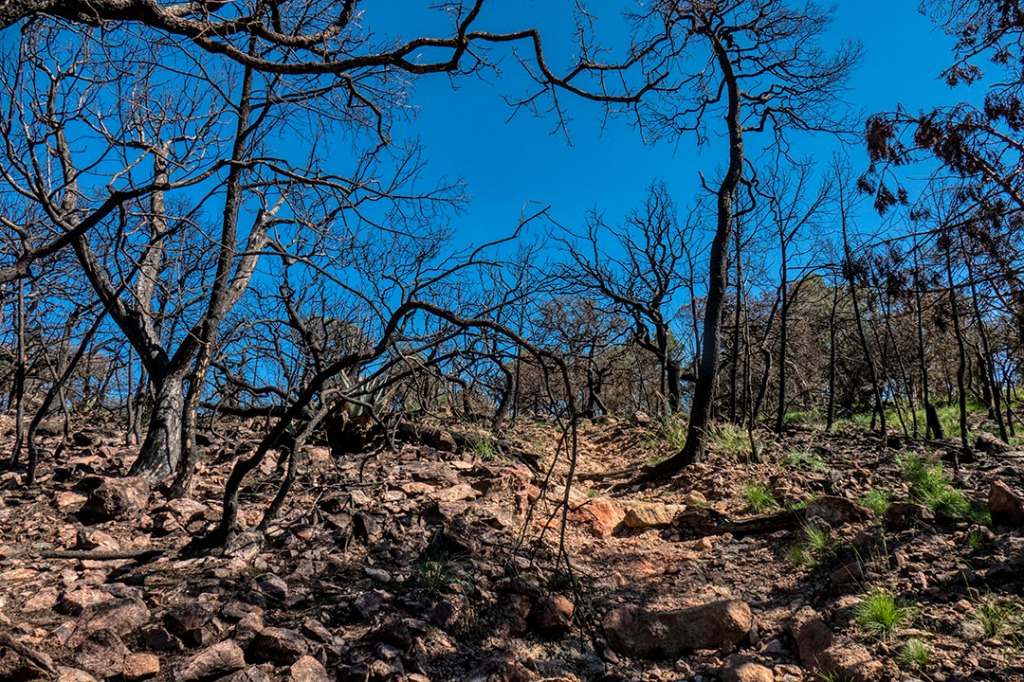
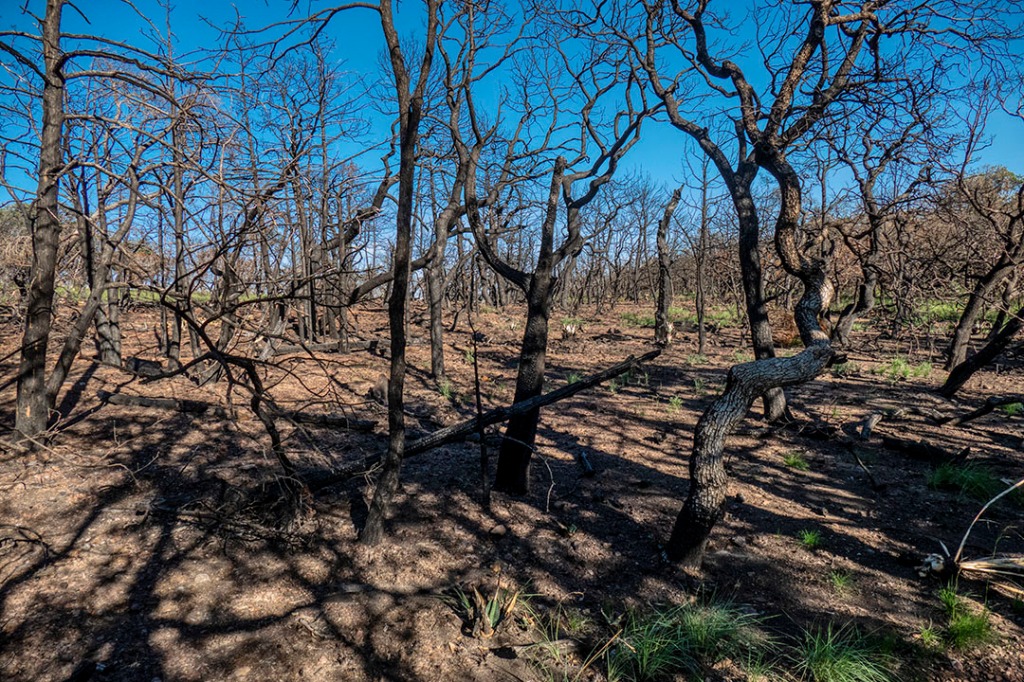
All is not ugly…flowers are proliferating as a result of seeds cracked open by the heat of the fire:
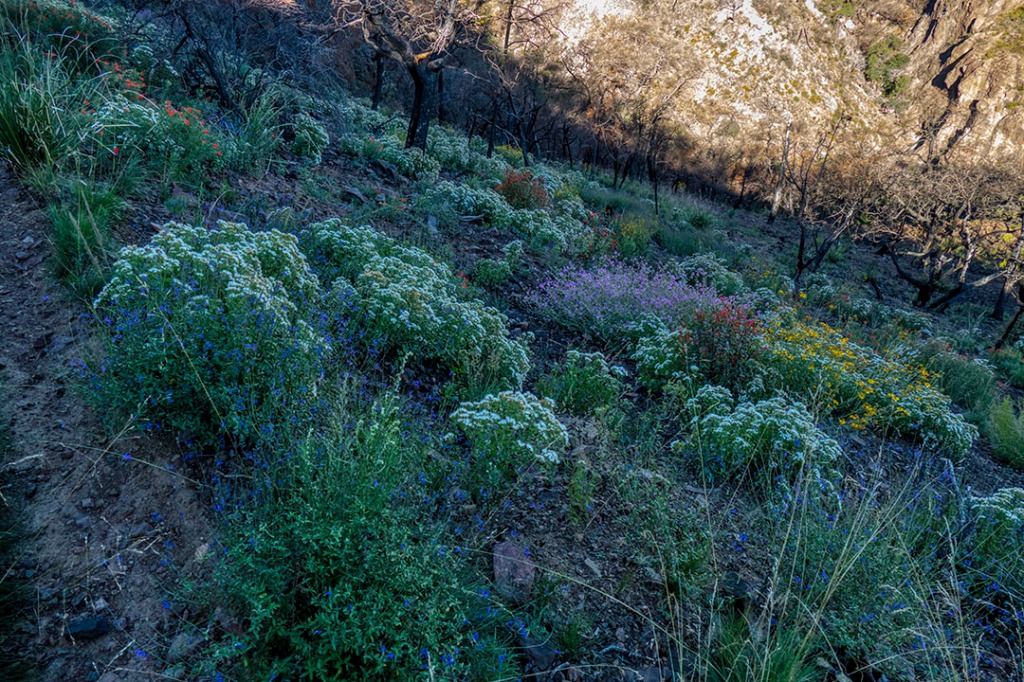
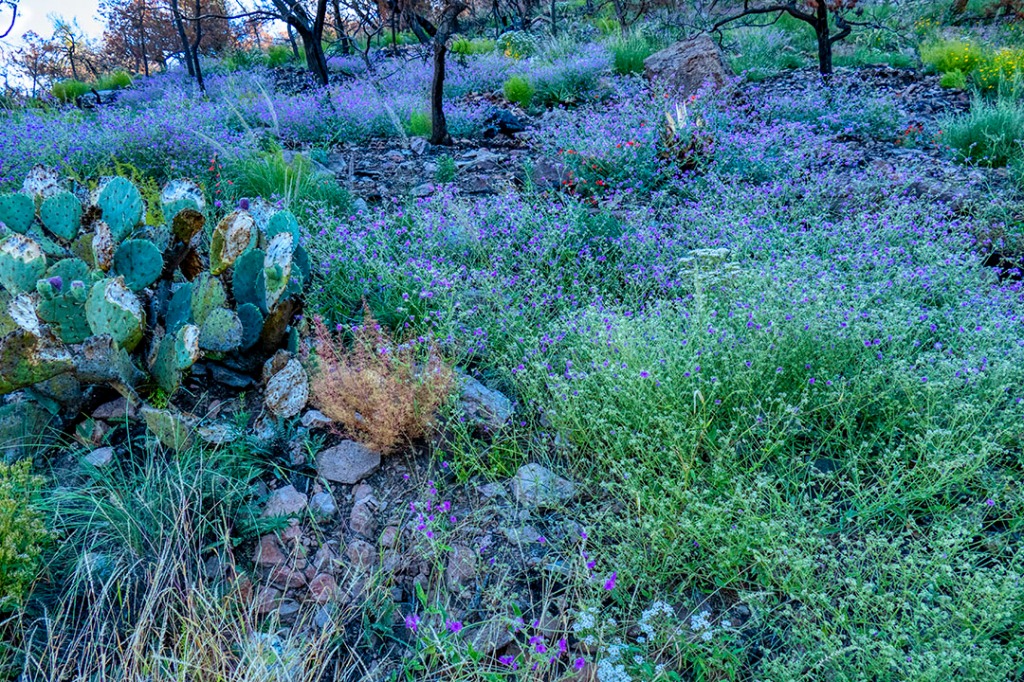
And with the flowers, it stands to reason that the butterflies would follow:
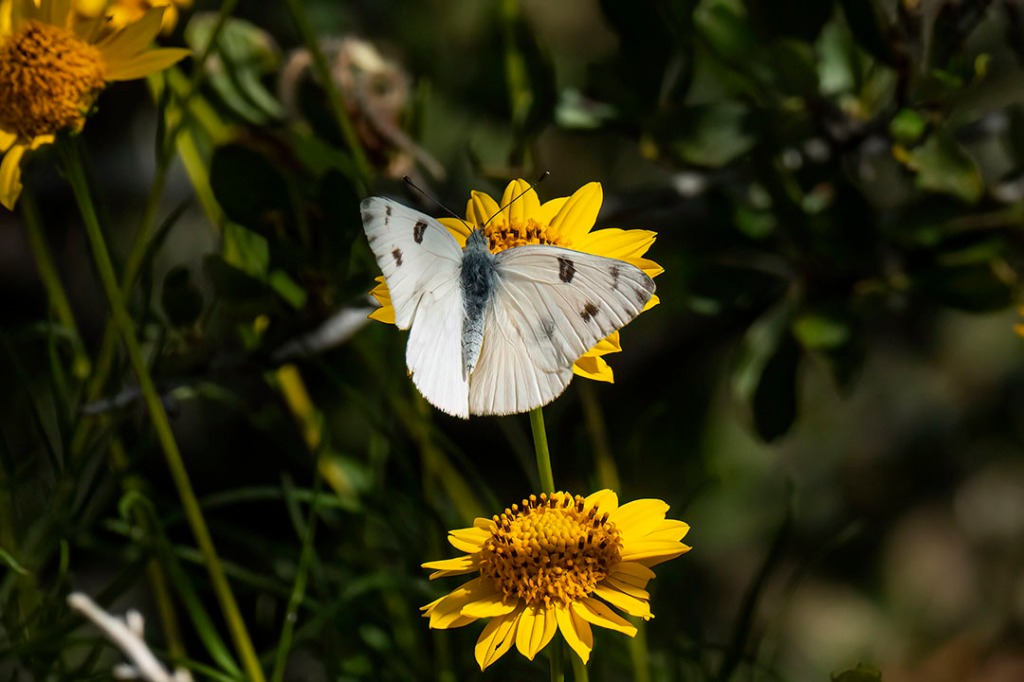
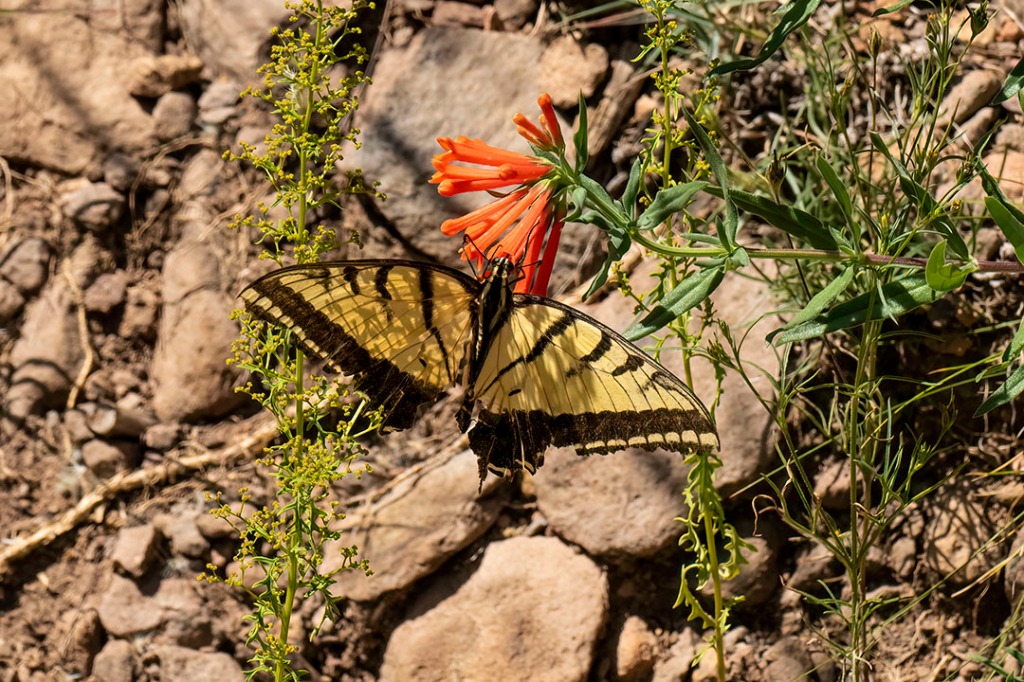
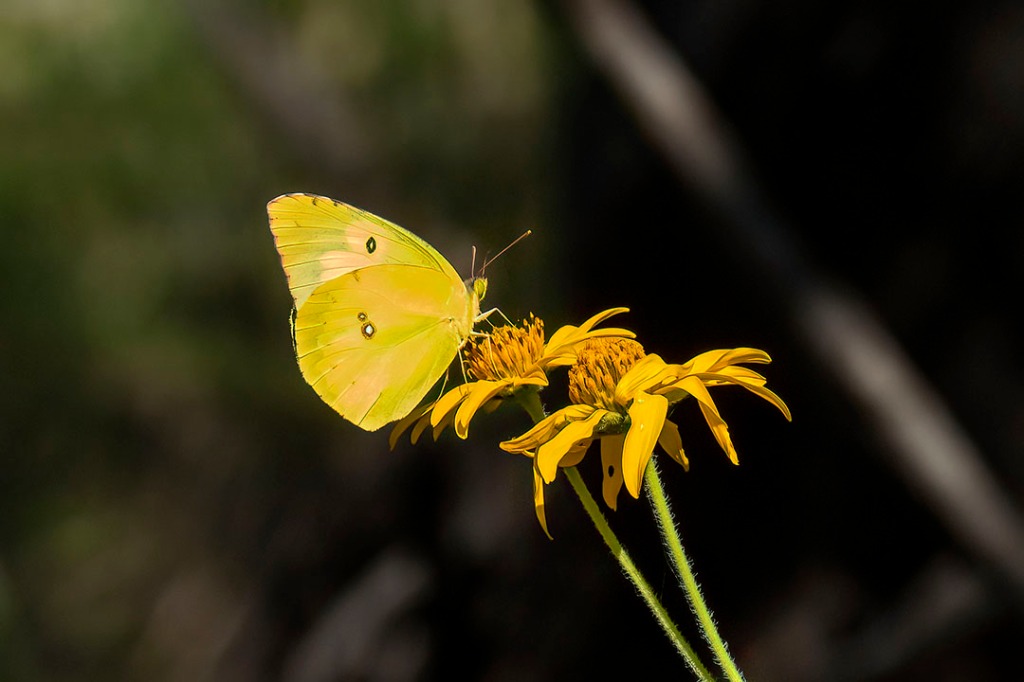
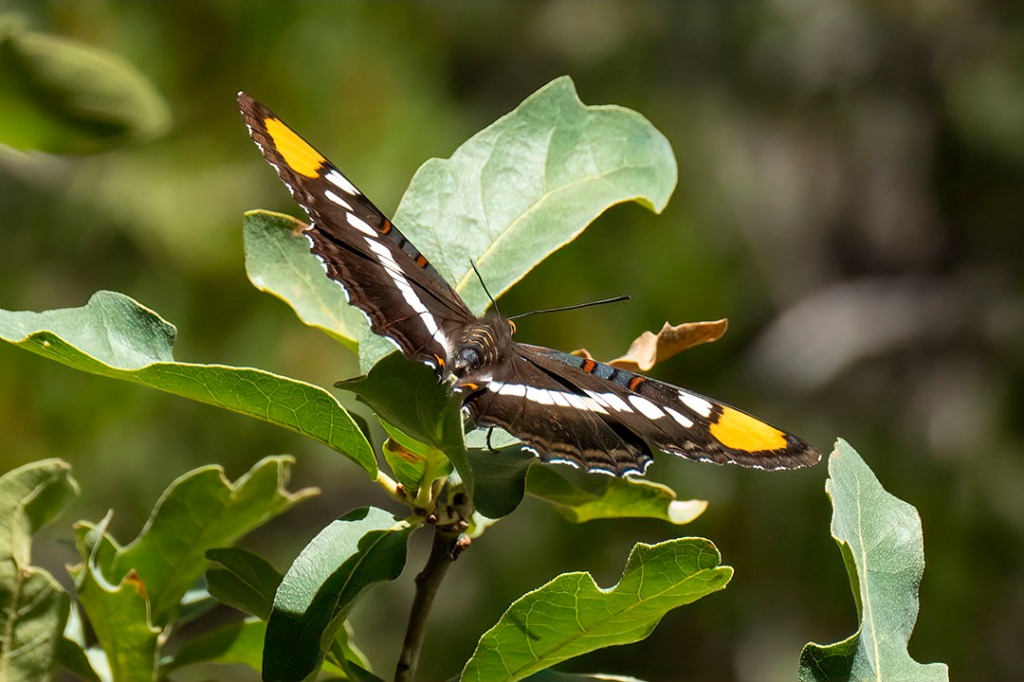
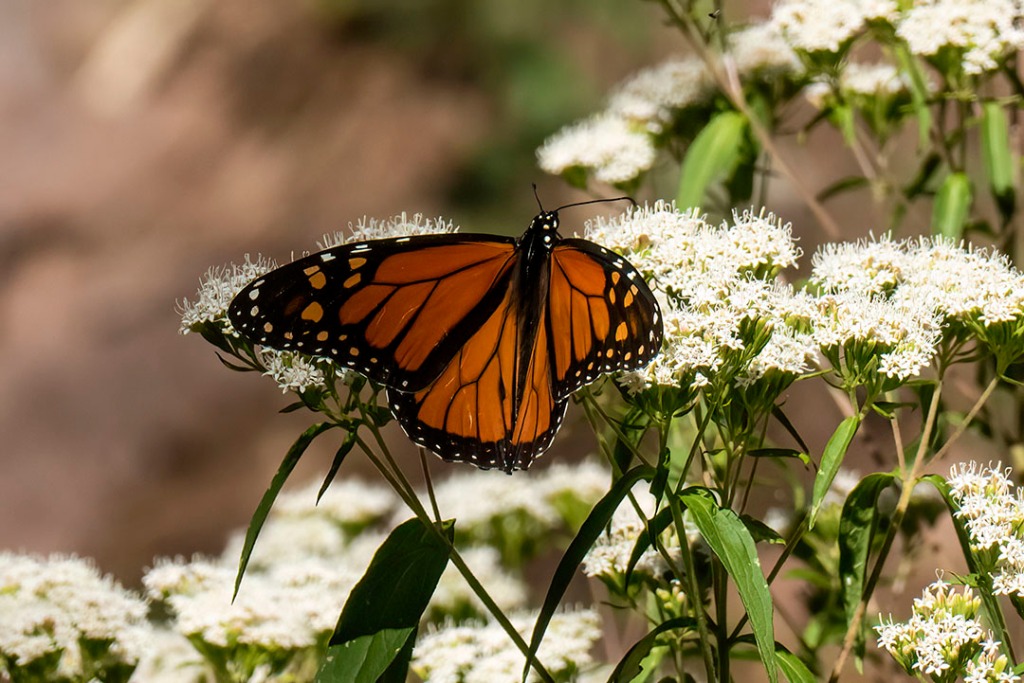
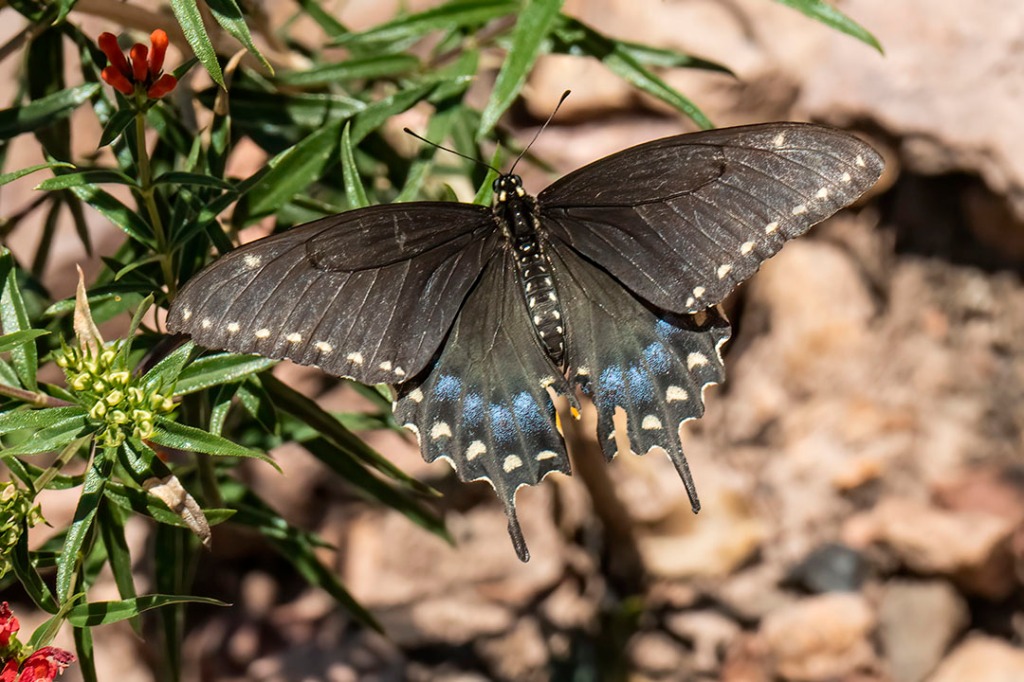
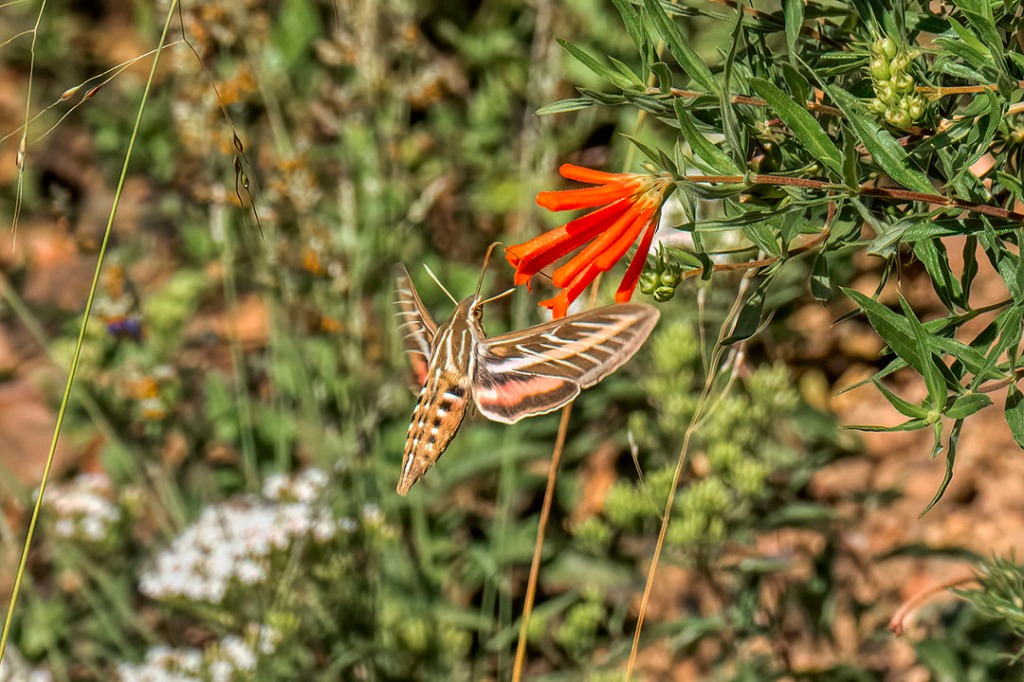
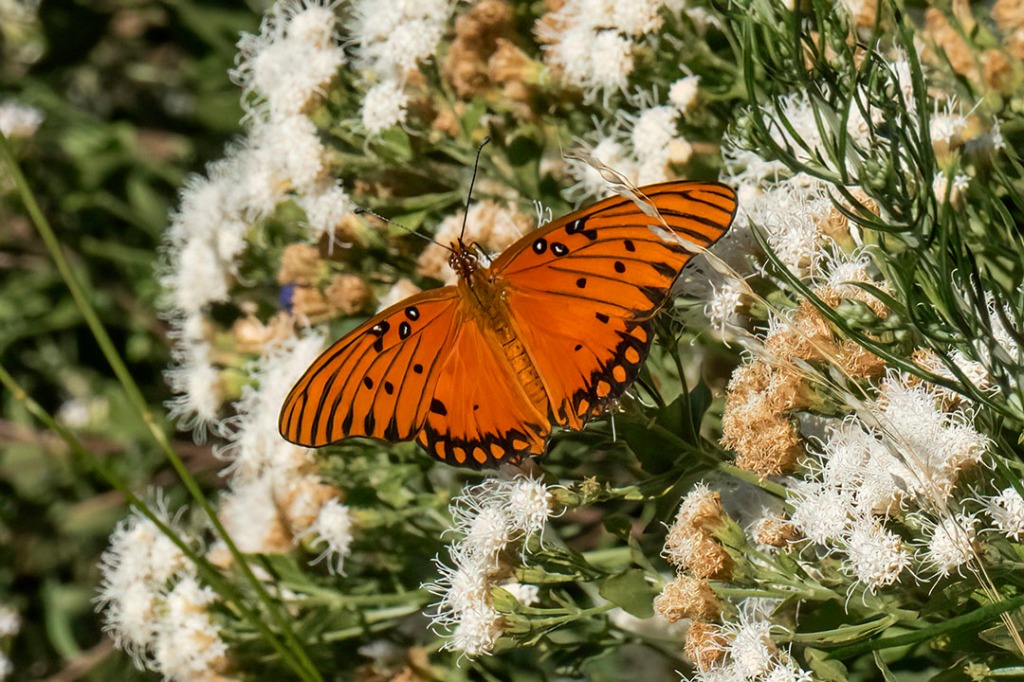
And the highlight of my trip: a pair of peregrine falcons doing a love dance above the cliffs of the east rim of the Chisos Mountains:
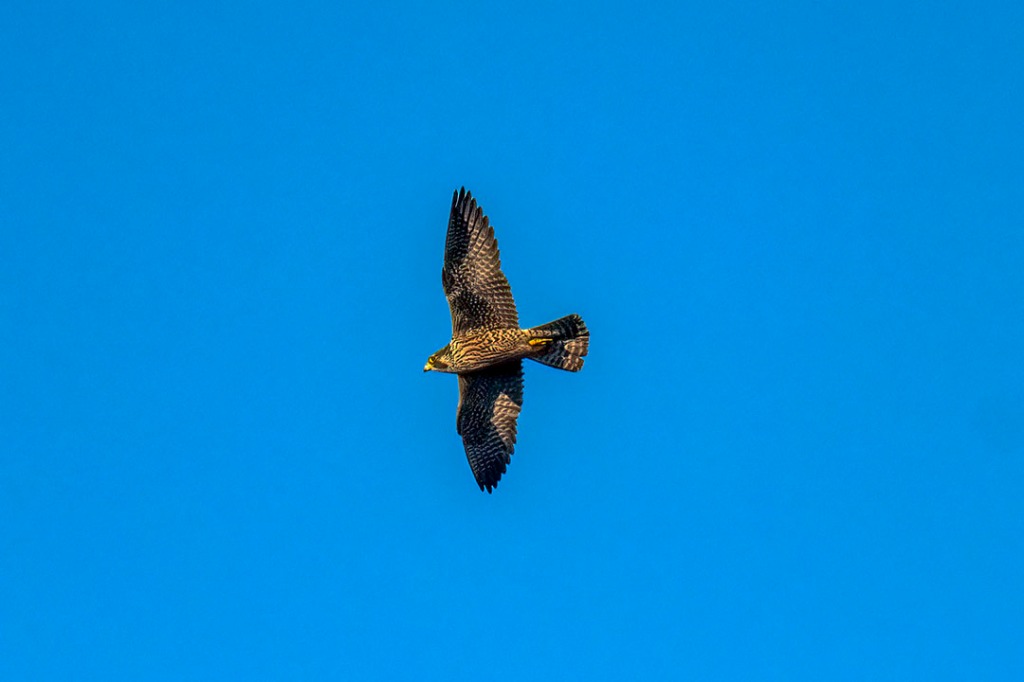
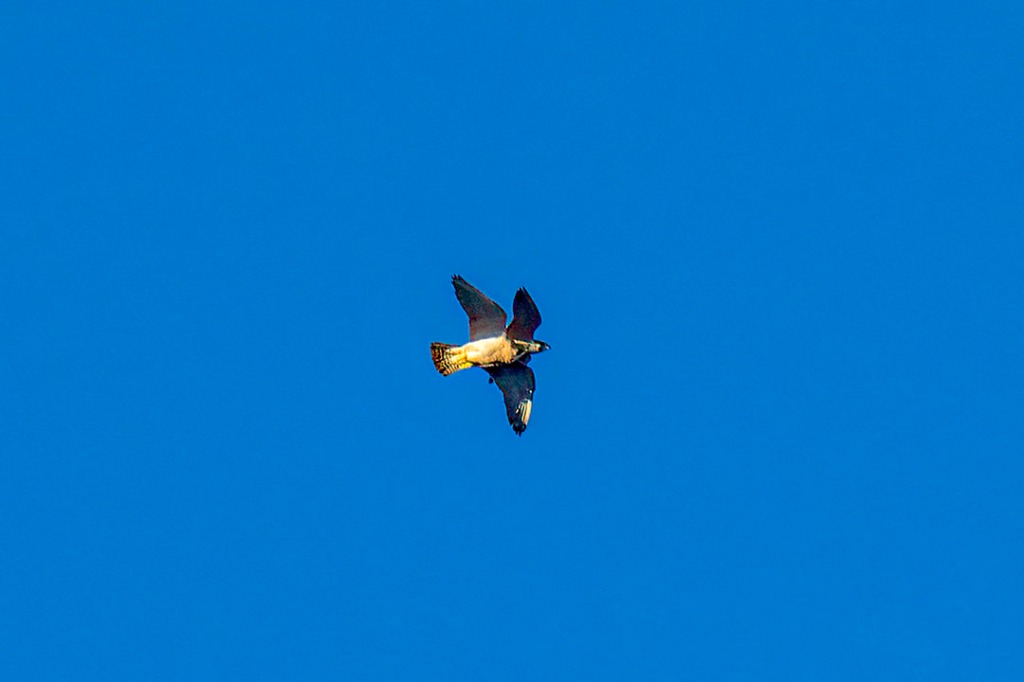
And the sun rises over the Sierra del Carmen Mountains in Mexico, as it continues to supply the burned and barren earth with life-giving energy for recovery:
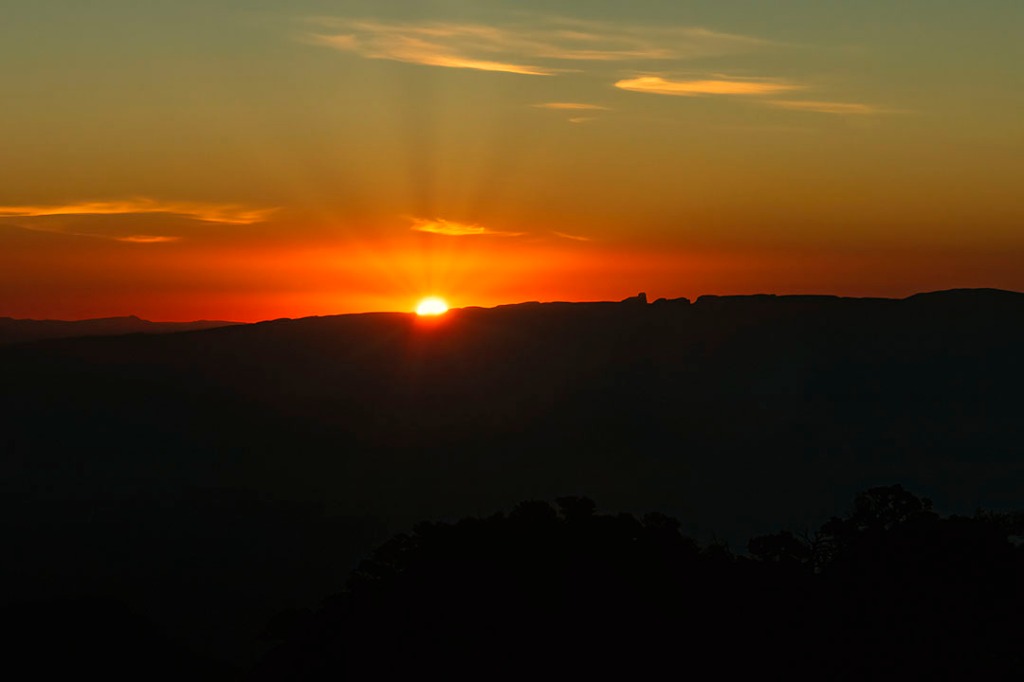

Terrible to see, let’s hope nature will recover soon. Have a lovely weekend and namy greets, Rudi
Nature is resilient and your shots of the grasses and small fauna returning is great evidence of that.
We visited Yellowstone a few months after the big fire of 1988 and I was amazed at the speed with which the ground cover, namely grasses and flowers, had returned. I should not have been surprised to find the same thing happening here. The difference is that a desert environment is so much more fragile and rains are much more infrequent, but a lot of rain has fallen since the fire and that has made a huge difference.
Last weekend, I visited Bastrop State Park for the first time. It was distressing to see the remnants of the terrible fires of 2011, but it also was amazing to see how well the recovery has proceeded. No one can miss the burned pines, but the grasses and flowers have filled in nicely. In fact, I’ve never seen so many Maximillian sunflowers; it was an astonishing sight.
A woman whose blog I follow posted some photos from Mount St. Helens, taken not so very long after the eruption. The Fireweed that is an early colonizer after forest fires in the mountains already was blooming in those black and empty fields. Amazing.
I especially enjoyed the butterfly photos. Although some have a nip or two taken out of them, they look to be in very good shape — and lucky you, to get a photo of that hummingbird moth. I’ve only seen a couple, but I always watch for them. My favorite of all the photos is the one with the flowers and the prickly pear. It’s just beautiful.
Thanks for the comments, Linda. I am usually not too surprised by the amazing response of nature to fire. It’s part of the necessary process of renewal…and in fact, there had not been a significant fire in the high Chisos Mtns in about 70 years, so the buildup of ground fuel was one of the factors that caused this fire to be so devastating.
I love fireweed. We don’t have it here, but I have seen a lot of it in the mountains of Utah, Colorado, Wyoming and Montana after fires have moved through. It’s just beautiful. The fact that fireweed came up at St. Helens so quickly is more amazing, because so much of the topsoil was covered by tons and tons of mud and ash. That’s a completely different scenario from fire.
The first hummingbird moth I ever saw freaked me out. I had no idea if it was a bird or a moth at first, because it flew and darted so quickly, just like a hummer. I was just very lucky to get a good image of one.
Thanks for the comments.
Thanks for making me aware of that forest fire, which I hadn’t heard about. It’s encouraging that the wildflowers dutifully returned, along with the critters that depend on them.
An amazingly fast recovery, for sure.